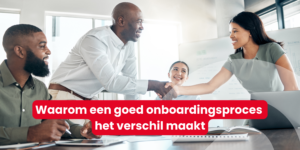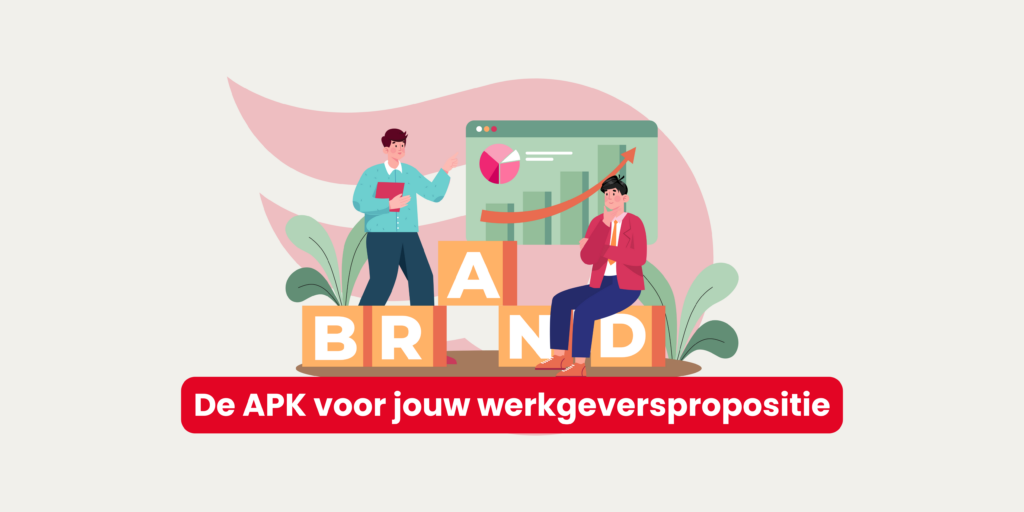
An effective onboarding process is the key to long-term engagement and satisfaction among new employees. Yet onboarding is still an underexposed topic for many organisations. While a well-designed onboarding programme not only ensures a warm welcome, but also lays the foundation for loyalty, motivation and productivity. In this blog, we take you through the seven essential phases of a successful onboarding process and give tips on how to improve your onboarding programme.
Why a good onboarding process is indispensable
Strong onboarding makes all the difference: new colleagues feel 70% more welcome and 50% more engaged when the onboarding process is well managed. It's not about a single introduction day, but an ongoing journey of at least a year. That journey - the onboarding programme - starts the moment the contract is signed and goes far beyond the first working day.
Phase 1: Pre-boarding - contact before day one
Did you know that 28% of new employees drop out before they start their first day of work at all? That is why it is essential to keep in touch during the pre-boarding phase. Think of a welcome video, a personal card or some fun information about the team beforehand. These small gestures make a big difference in the feeling of connection.
Phase 2: The first working day - a warm welcome
The first day at work sets the tone for the rest of the employment. Provide a warm welcome, an orderly induction programme and - why not - a nice surprise on the desk. Introduce the new colleague to the team and make room for a first informal conversation. A positive start sticks around for a long time.
Phase 3: The first week - guidance with a buddy
Spread the information over several days and appoint a buddy to guide the new colleague. This way, you avoid information overload and give space to absorb everything at their own pace. A dynamic induction programme, with variety in what someone needs to know, do and experience - such as the 'Mix Of Experiences Boarding' - makes the experience richer and more effective.
Phase 4: The first month - reflection and growth
The first few weeks fly by. End the month with an equal conversation in which feedback is shared and mutual expectations are expressed. This makes the onboarding process more personal and effective. Show that you are invested in their growth, and that they have a say in their role on the team.
Phase 5: After 100 days - evaluation and direction
After about three months, it is time to take stock. What is going well? What can be improved? Where are opportunities for development? This phase is crucial for maintaining engagement. Gallup research shows that employees who feel engaged during this phase are 59% less likely to leave within the first year.
Phase 6: The first year - from colleague to ambassador
Onboarding does not end after a few months, but ideally extends throughout the first year. Use this moment to look back together as well as look ahead. What are the growth objectives? How can they become ambassadors for your organisation? A good onboarding process ends with a flying start towards sustainable employability.
Common mistakes in the onboarding process
Even though many organisations have an onboarding programme, mistakes are often made that undermine its effectiveness. A common pitfall is that the onboarding process stops after the first week. As a result, new employees miss important information, guidance and moments of connection at crucial points in their first few months. Onboarding is not a sprint, but a marathon.
Another mistake is an overly one-sided approach: focusing only on practical matters such as ICT settings and HR documentation. While this is important, a good onboarding process is also about culture, connection and personal growth. So ensure a balance between 'need to know' and 'nice to know' - and above all, don't forget the 'fun' element.
In addition, we often see organisations not asking for feedback from new colleagues about their onboarding experience. Precisely this feedback is worth its weight in gold: it helps you to continuously improve the onboarding programme and better tailor it to different functions and personalities.
Finally, it is important to align the onboarding process with the broader employee journey. Think about personal development plans, internal mobility and career paths. When onboarding is well integrated into the overall work experience, it not only increases job happiness, but also long-term retention and performance.
Tips for a powerful onboarding programme
-
Provide structure, but leave room for personalisation.
-
Use technology (such as onboarding apps) to make information available.
-
Actively involve the team in onboarding new colleagues.
-
Measure and evaluate the onboarding process regularly.
Onboarding as part of the complete employee journey
At Goals we see onboarding not as a stand-alone process, but as an essential part of the wider candidate and employee journey. After all, the way you welcome new colleagues forms the bridge between recruitment and sustainable employability. A good onboarding process connects seamlessly with the expectations already raised during the application process.
Wondering how to strategise the entire journey - from first contact to engaged ambassador? Then take a look at our Employer Branding Model and find out how onboarding fits perfectly into that.


